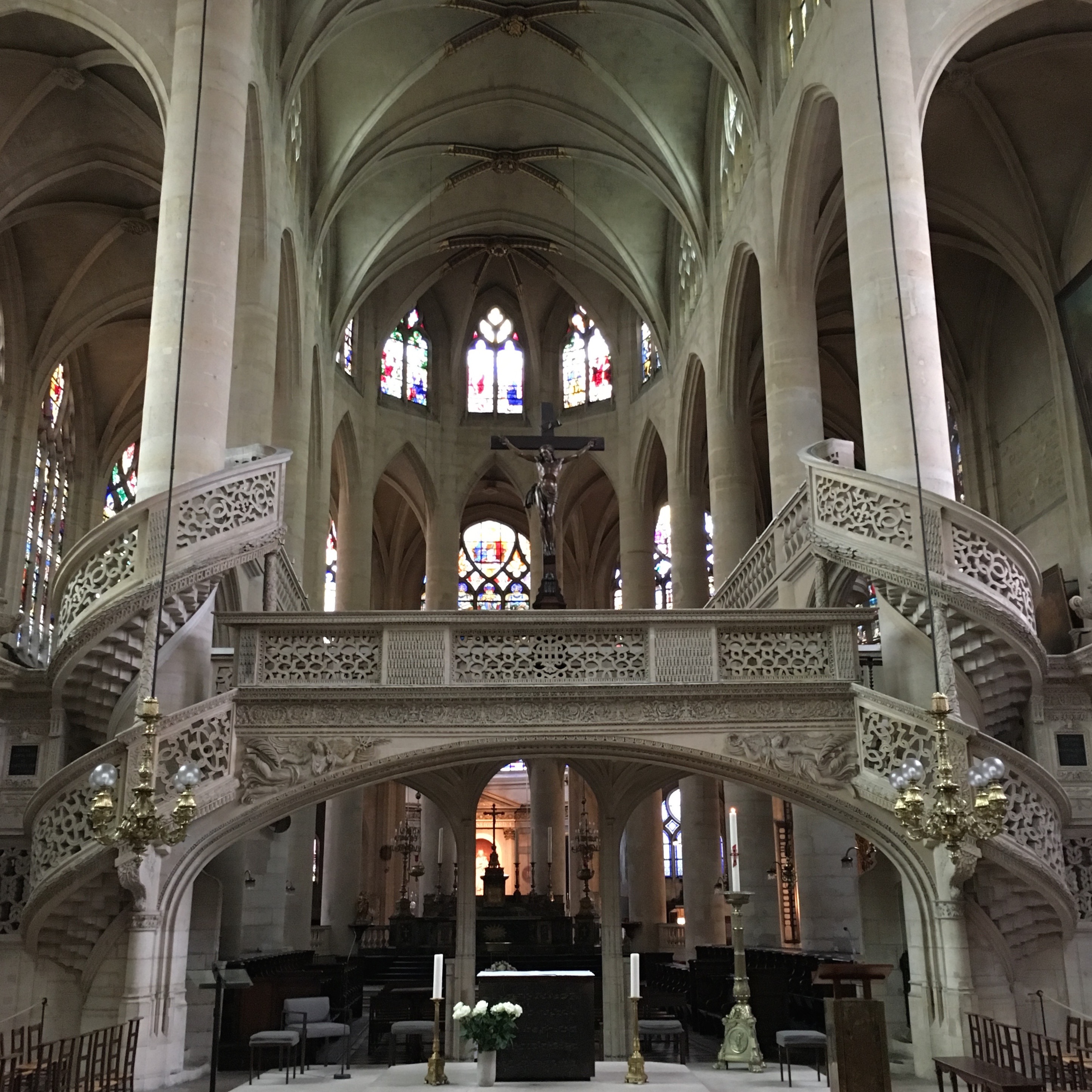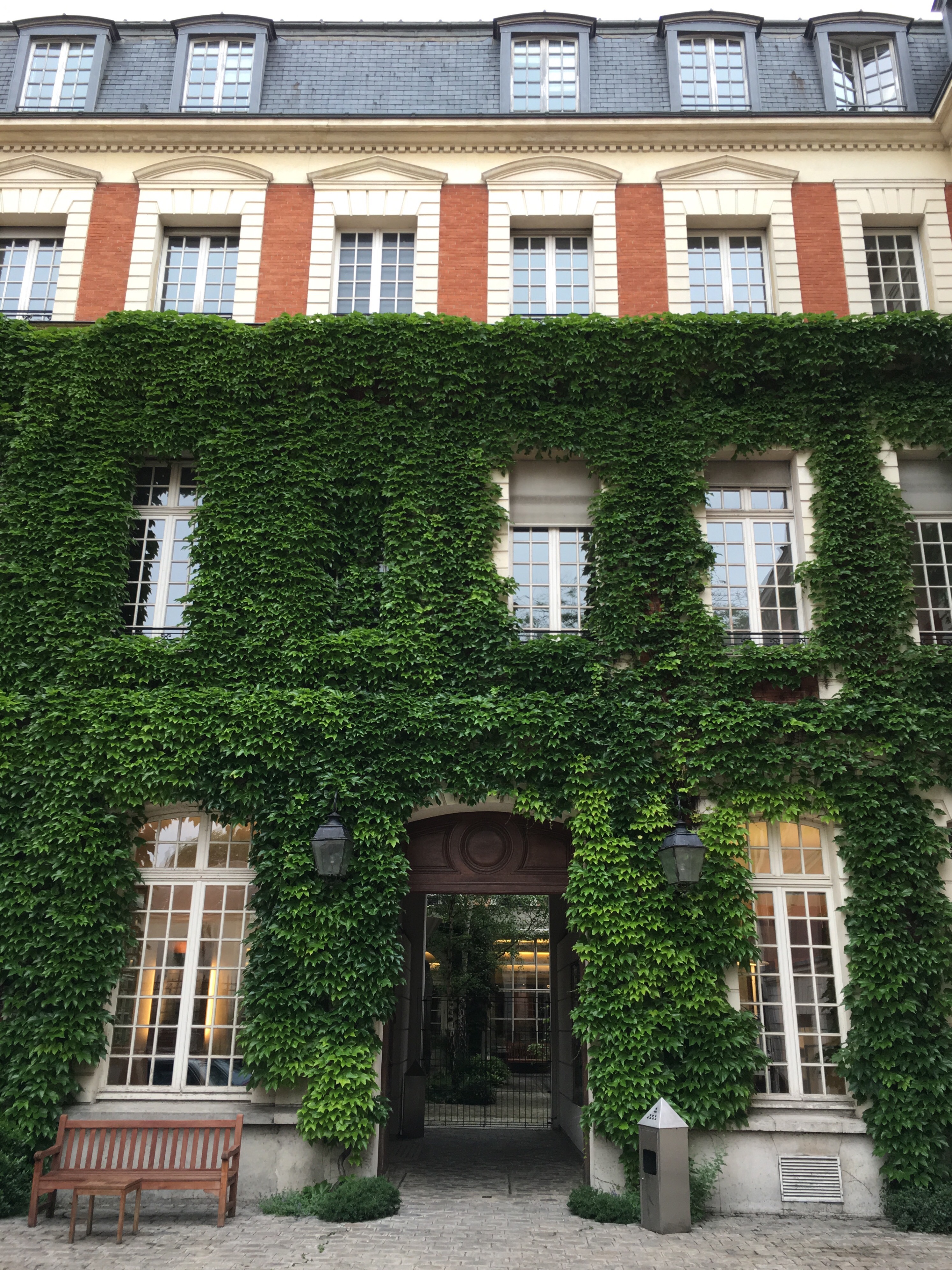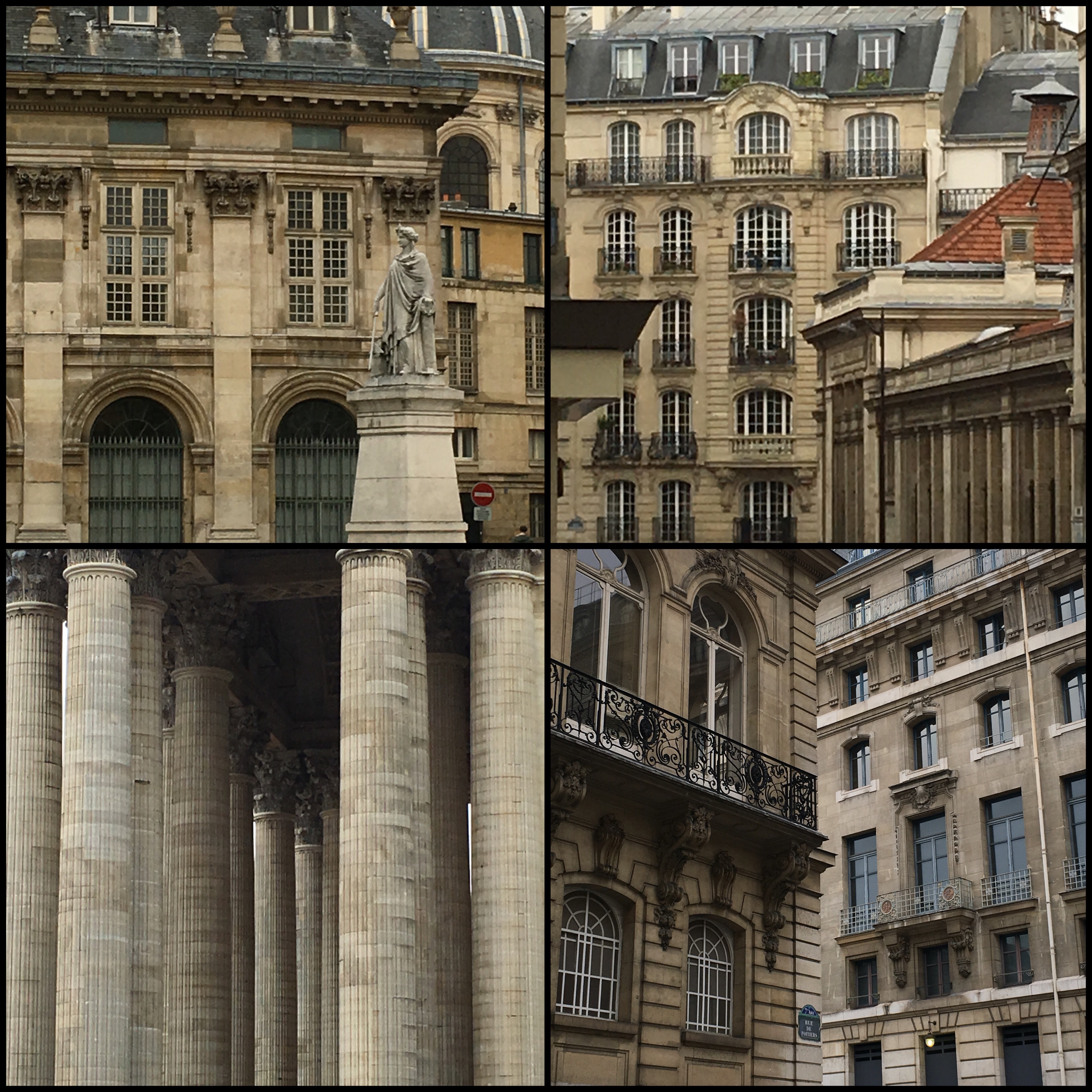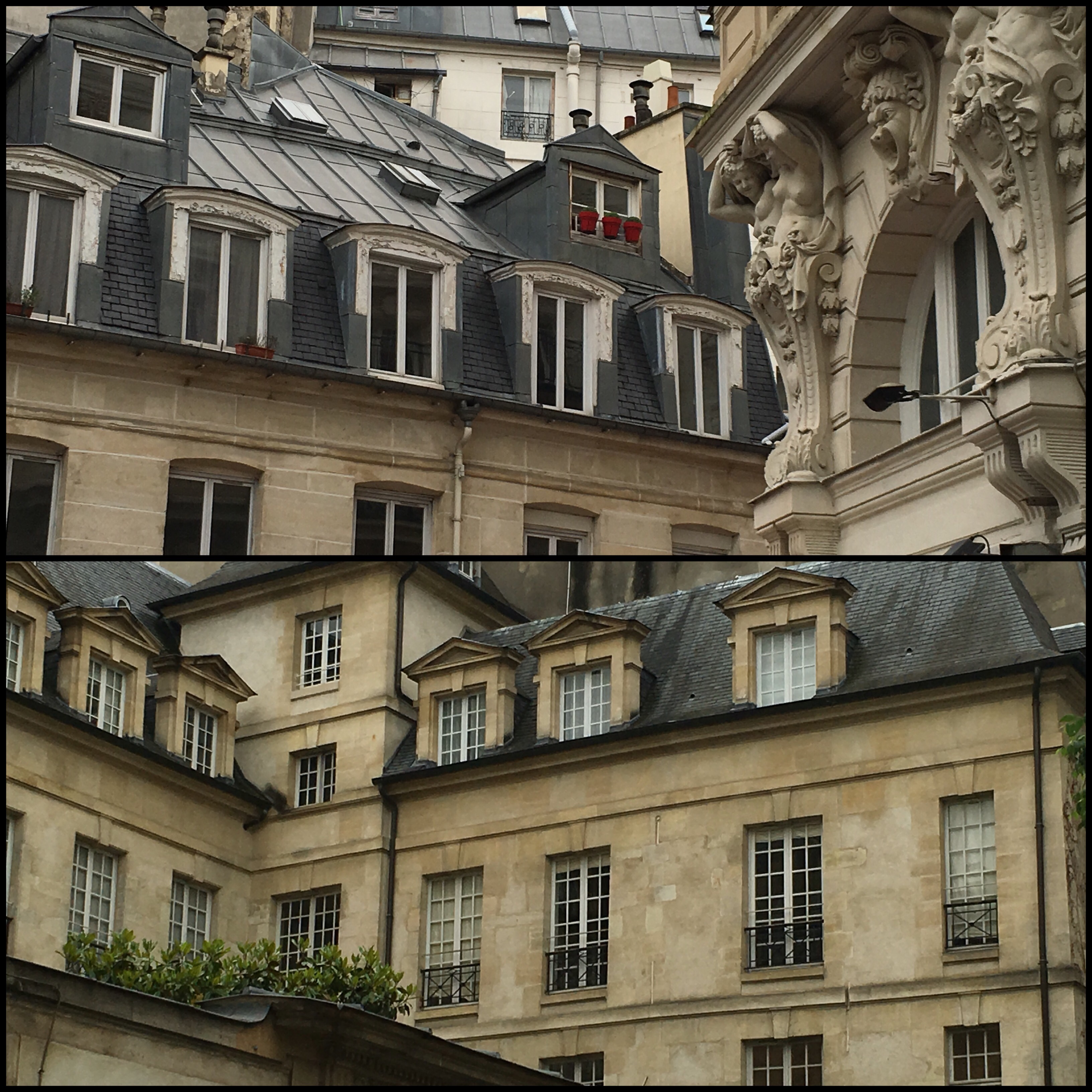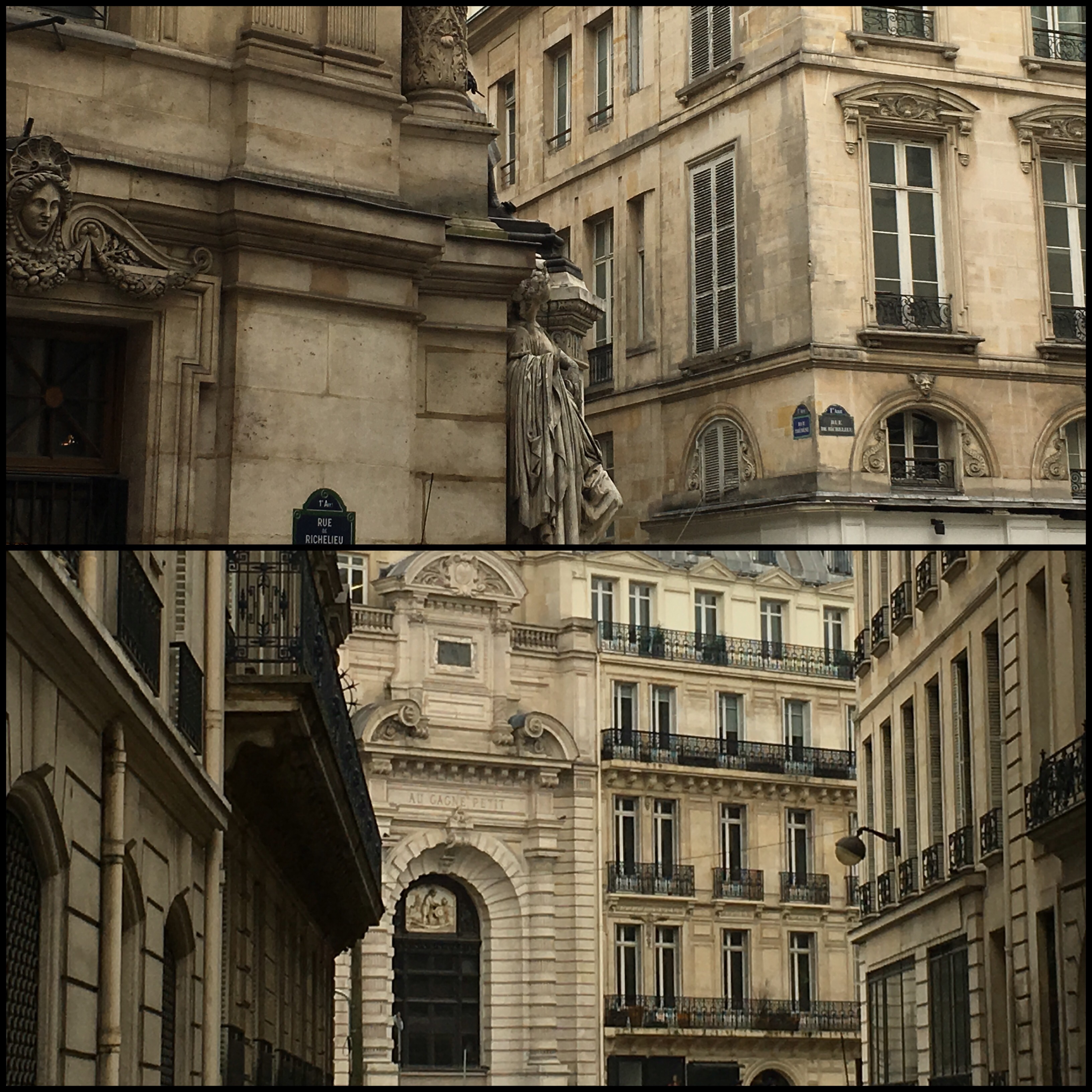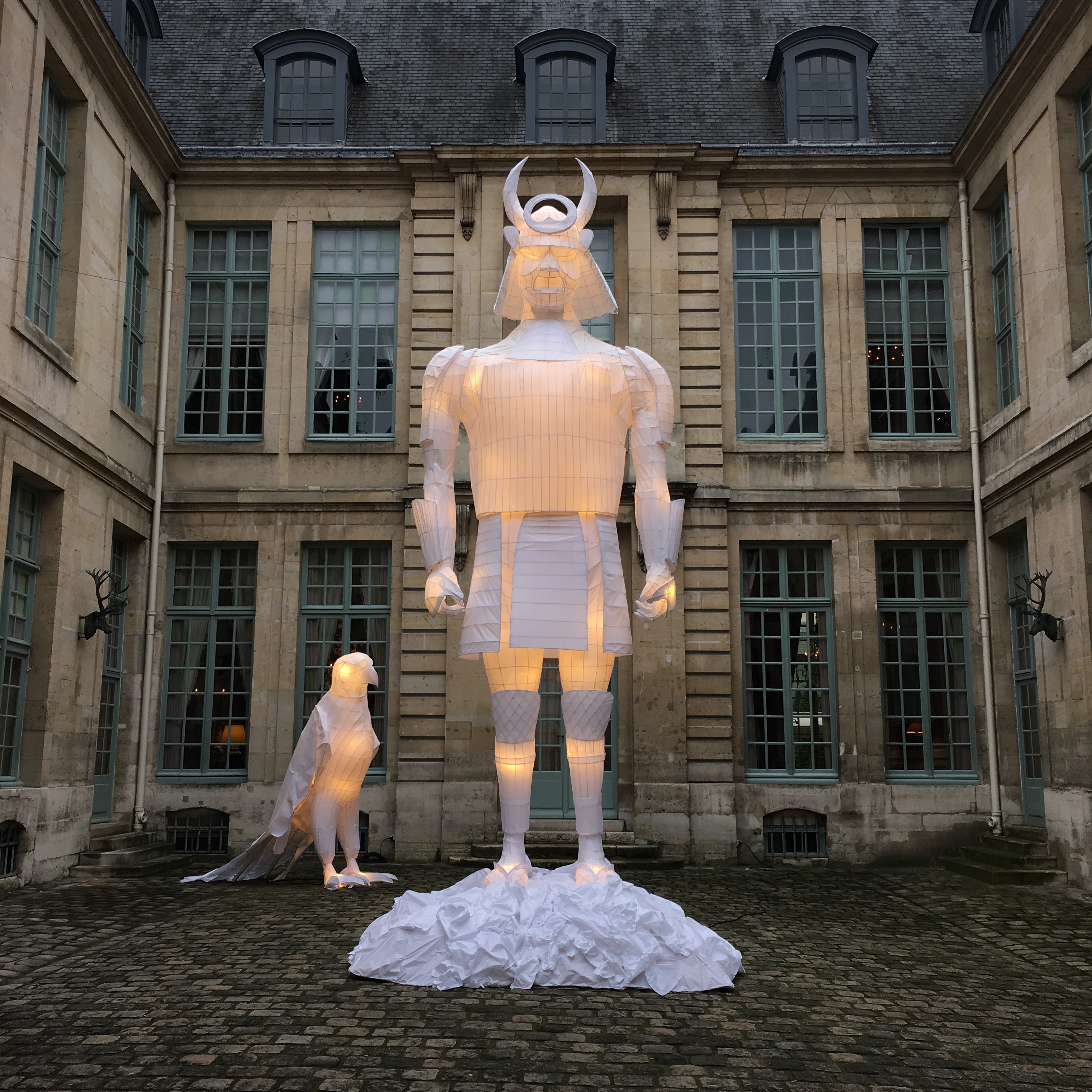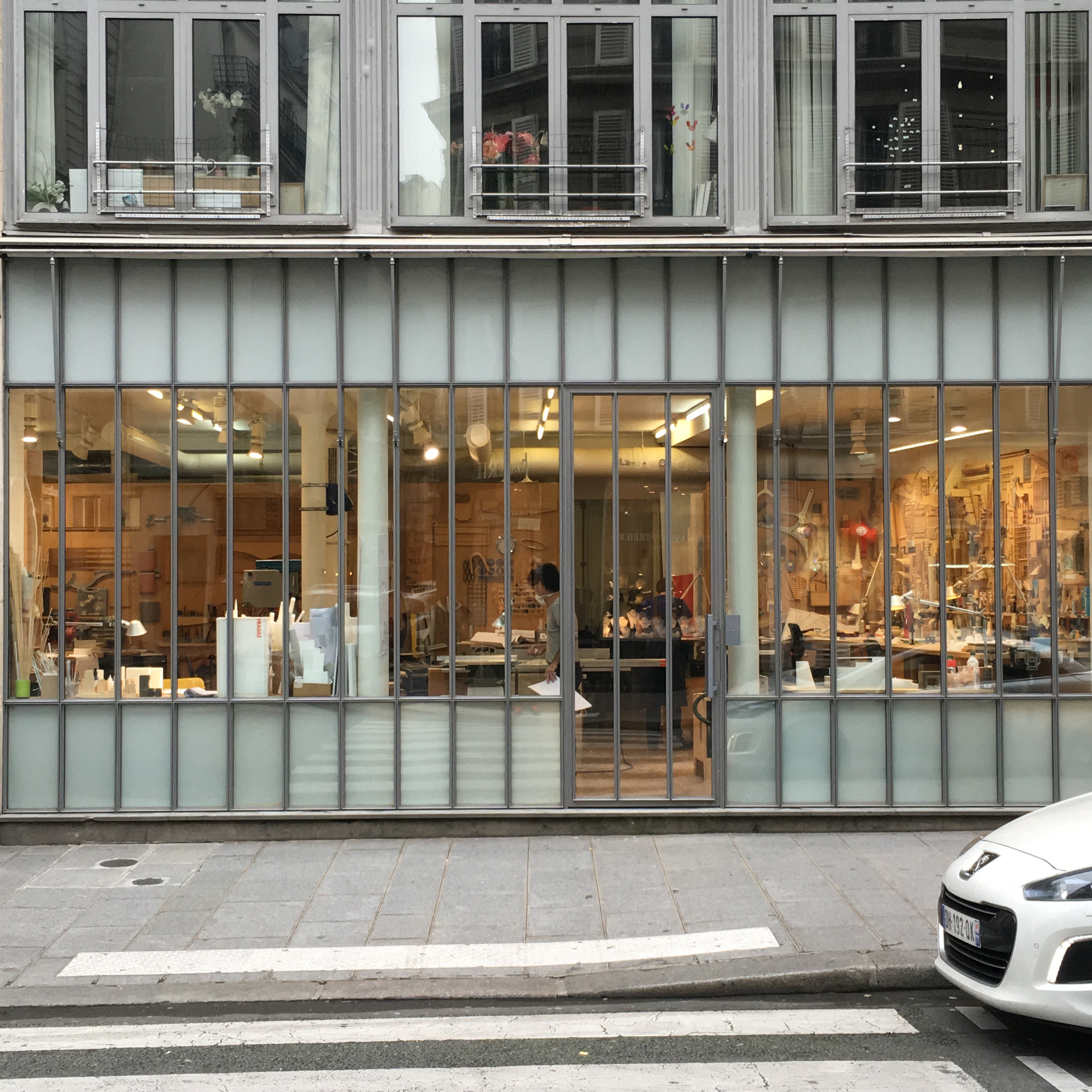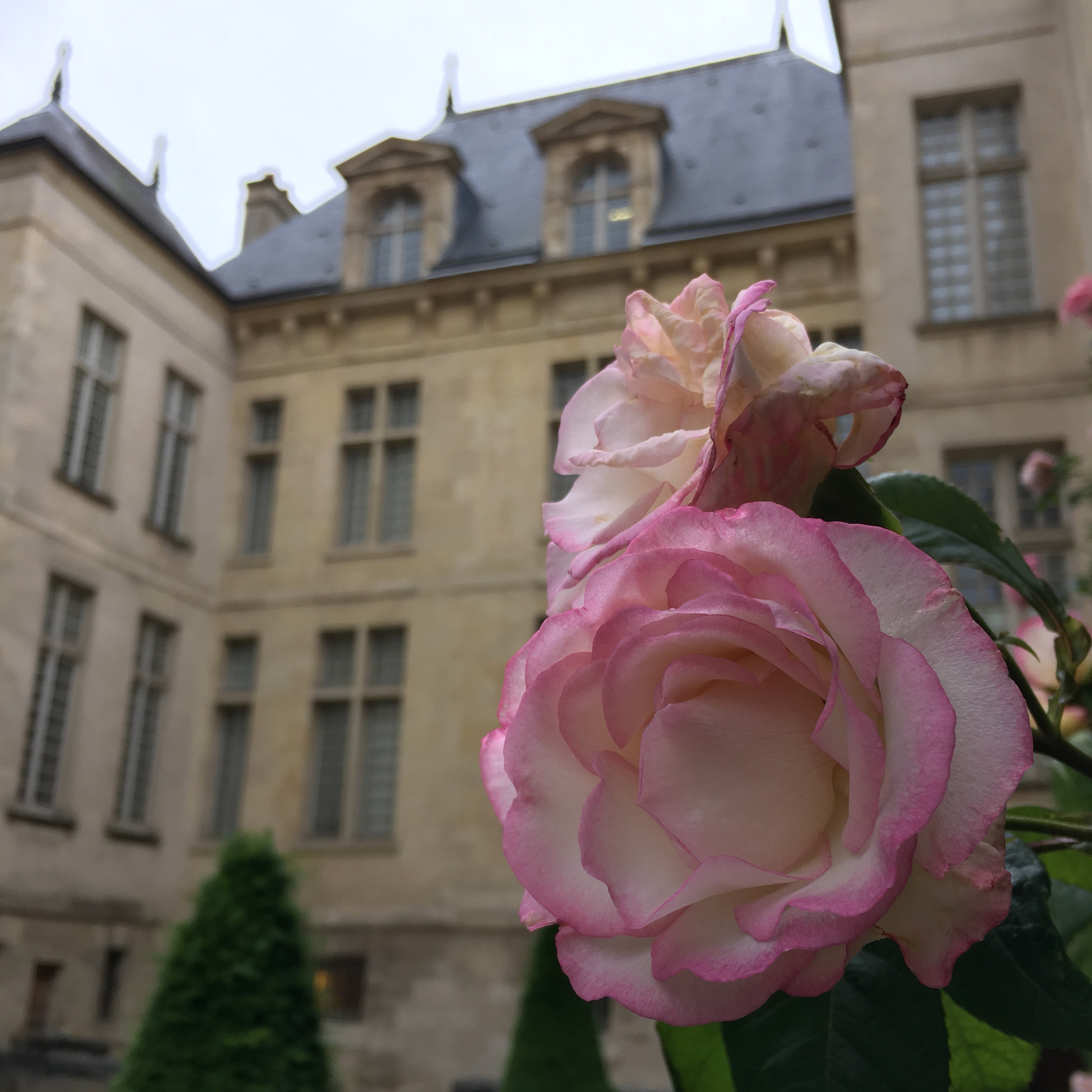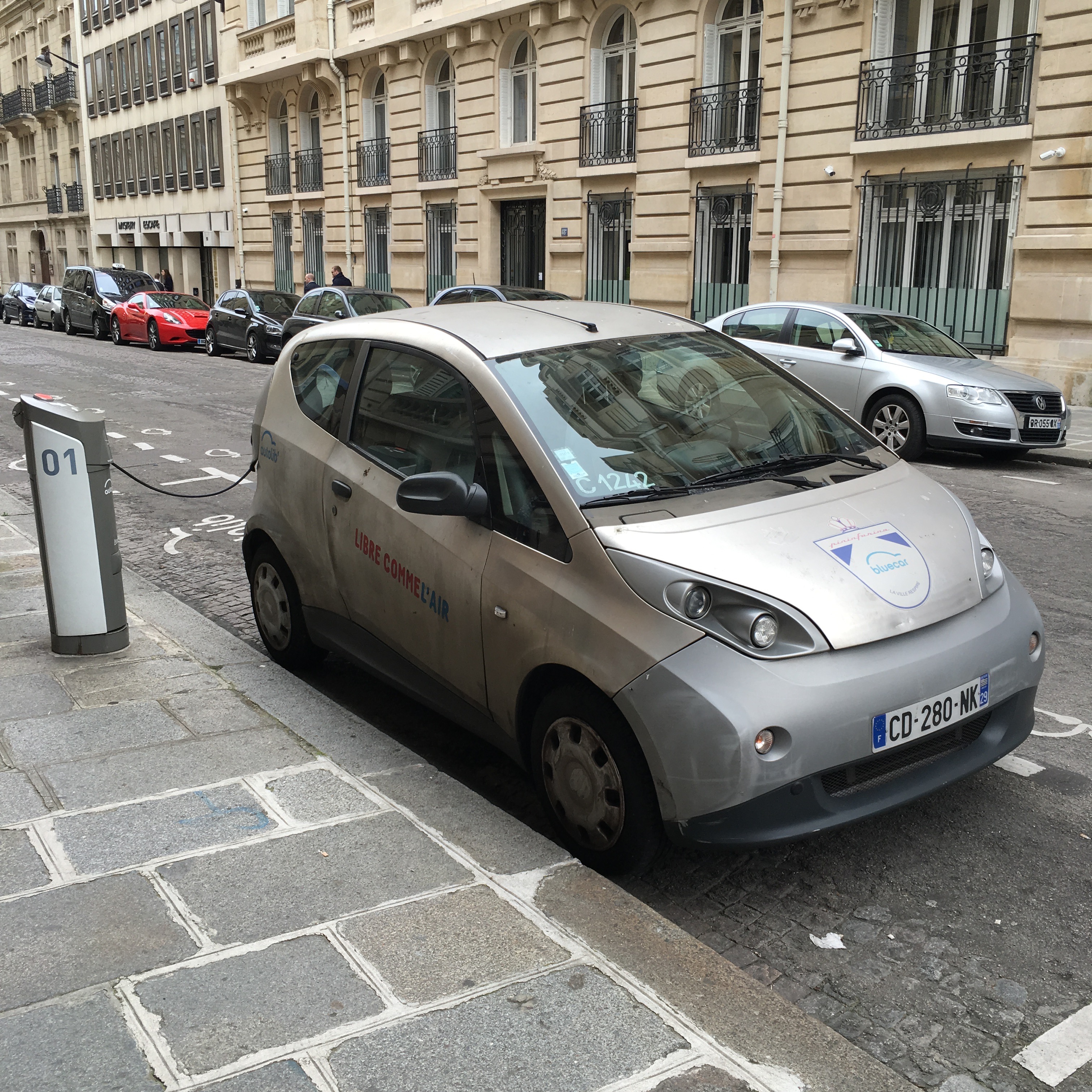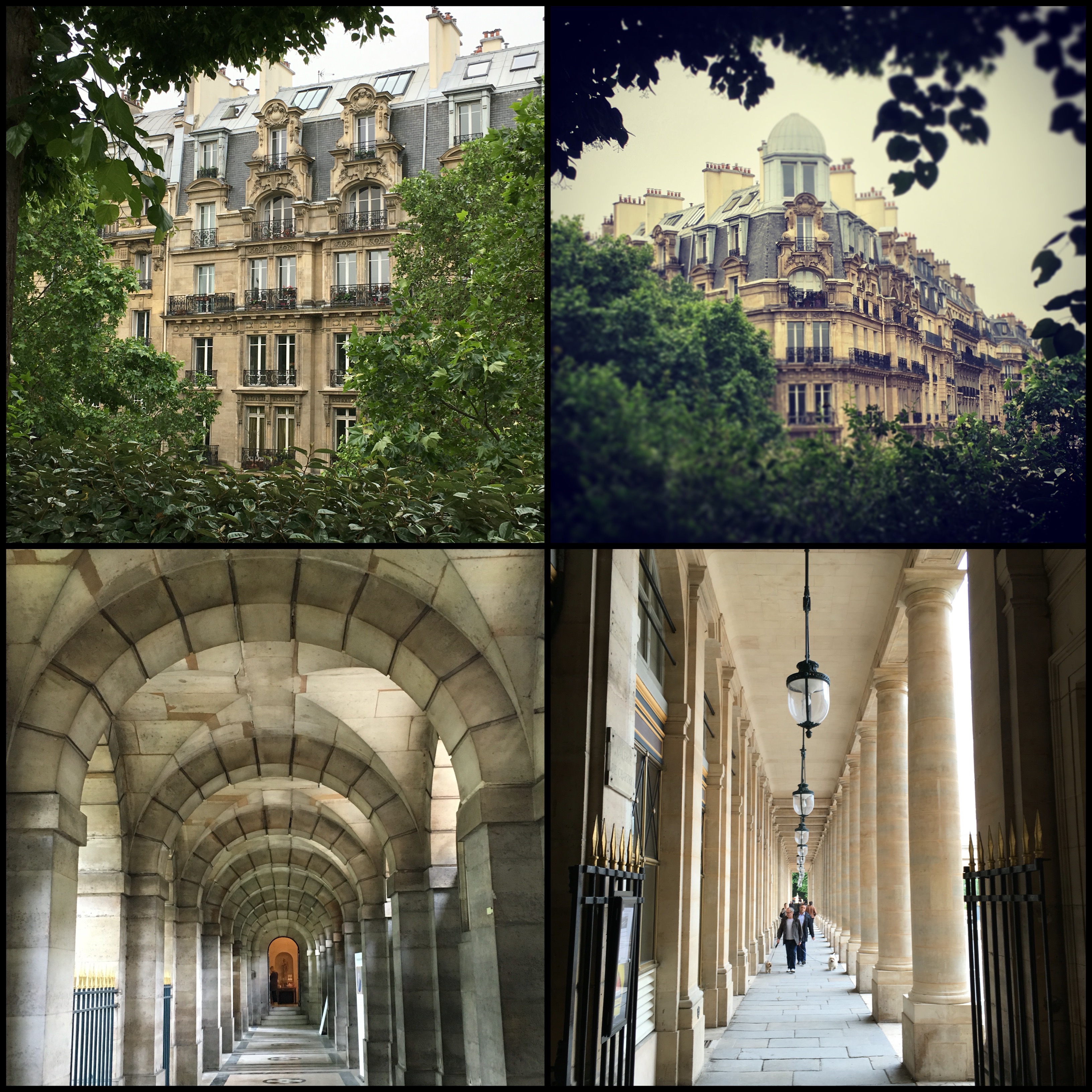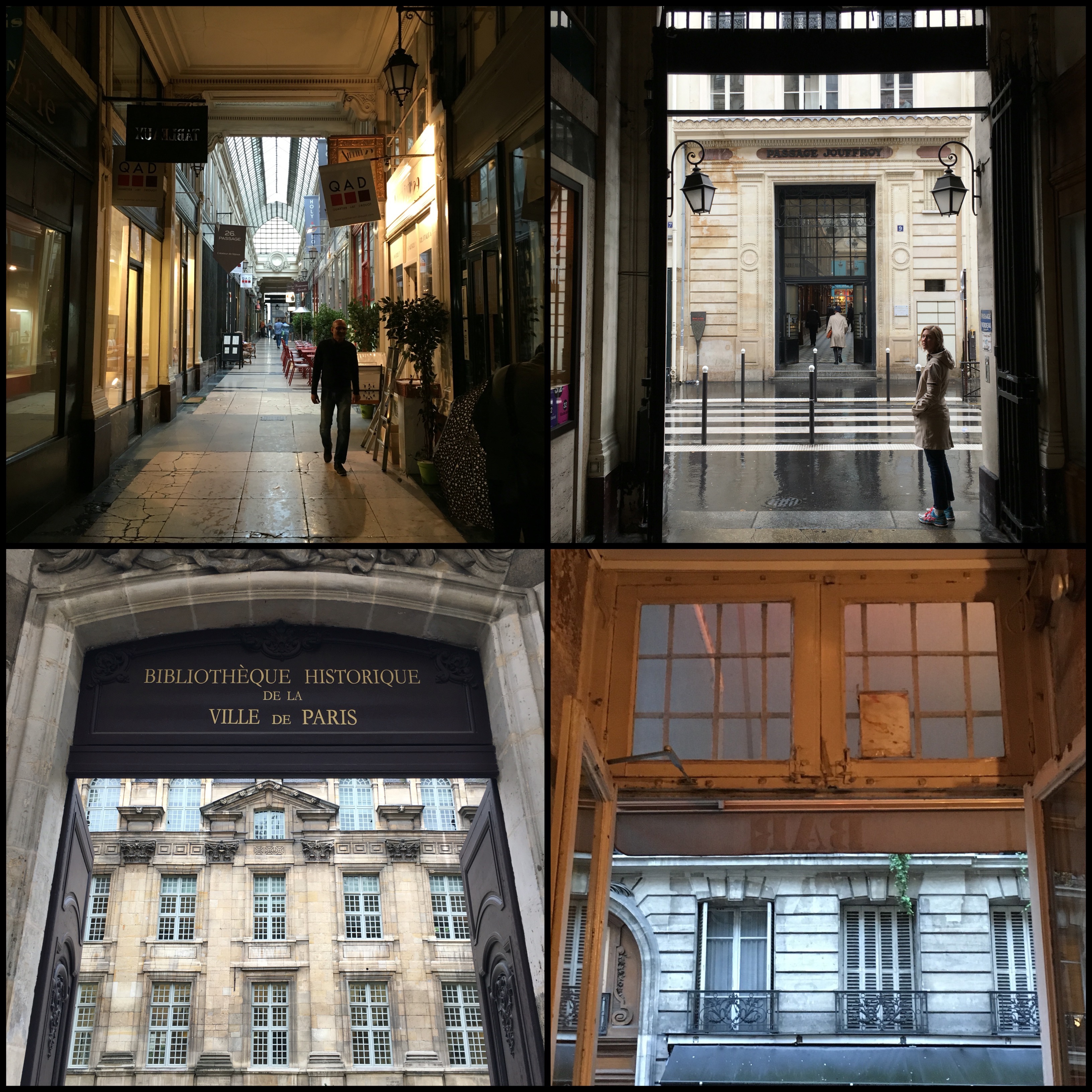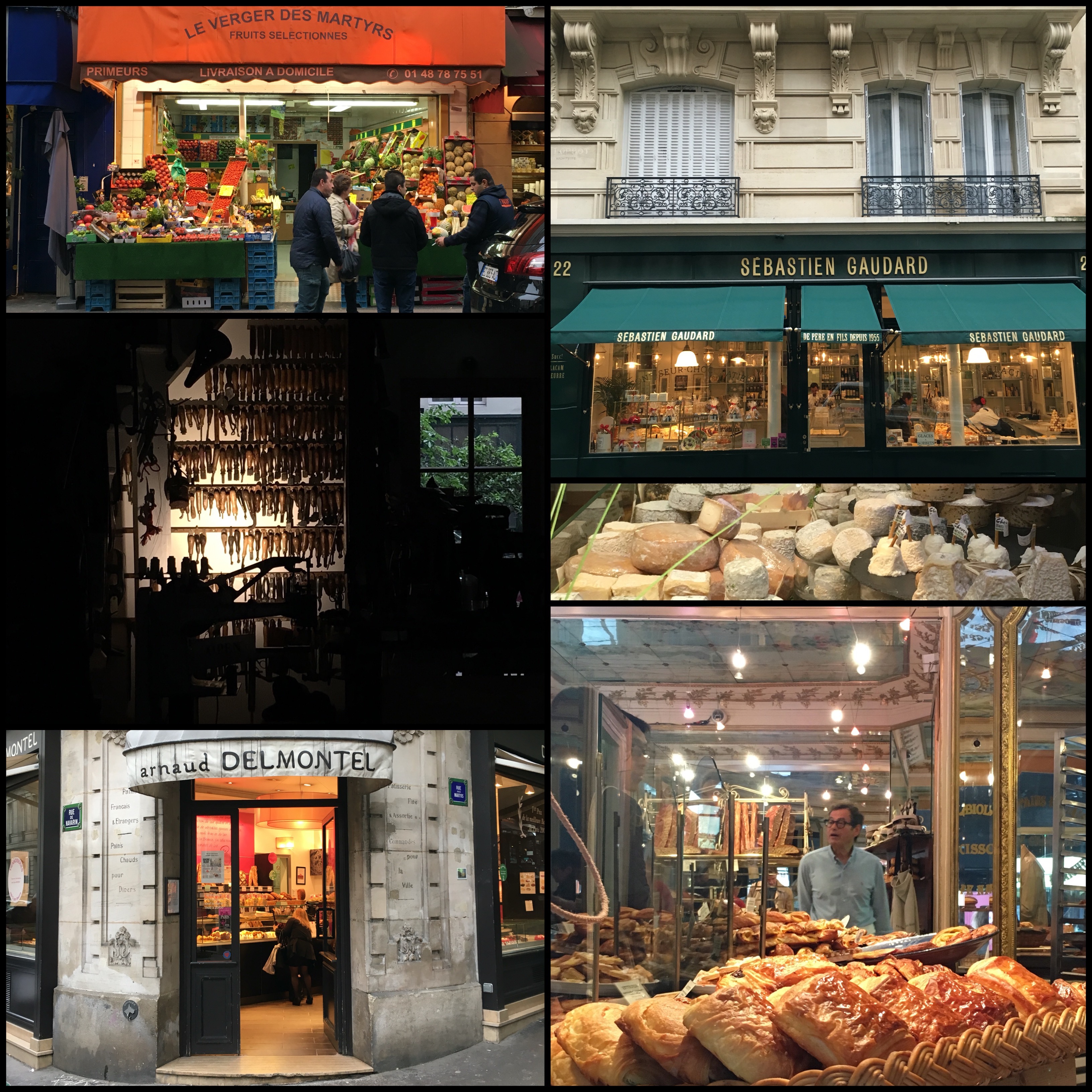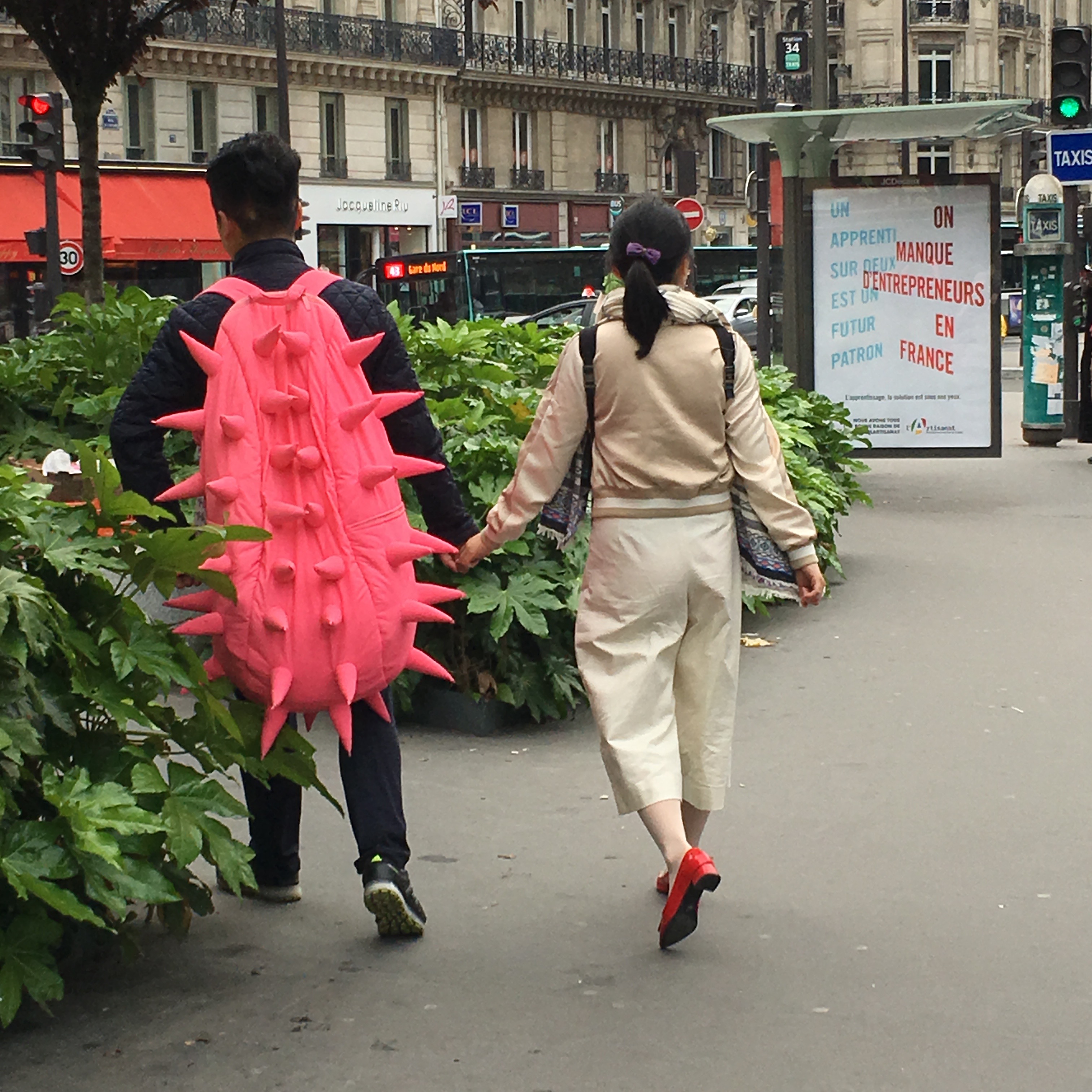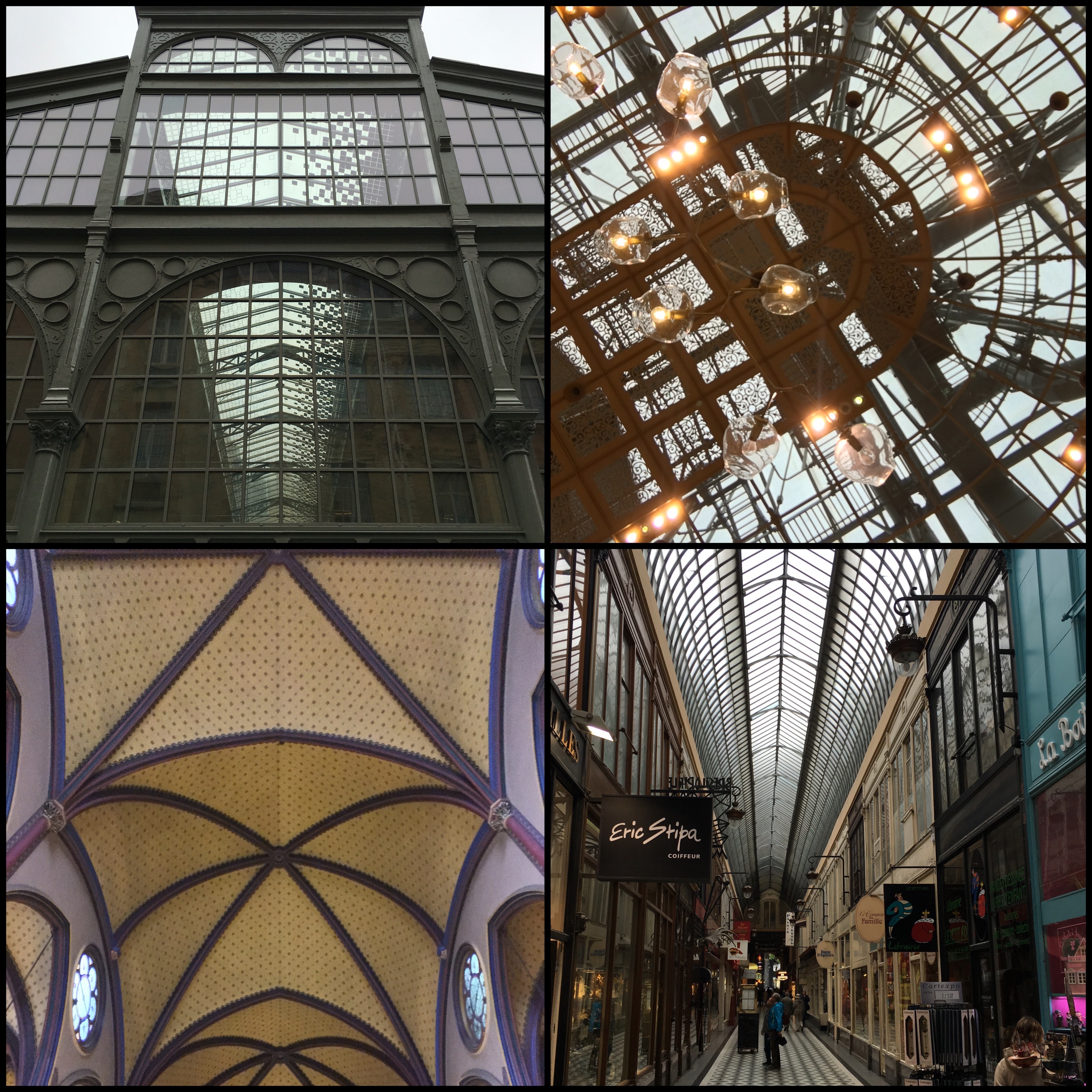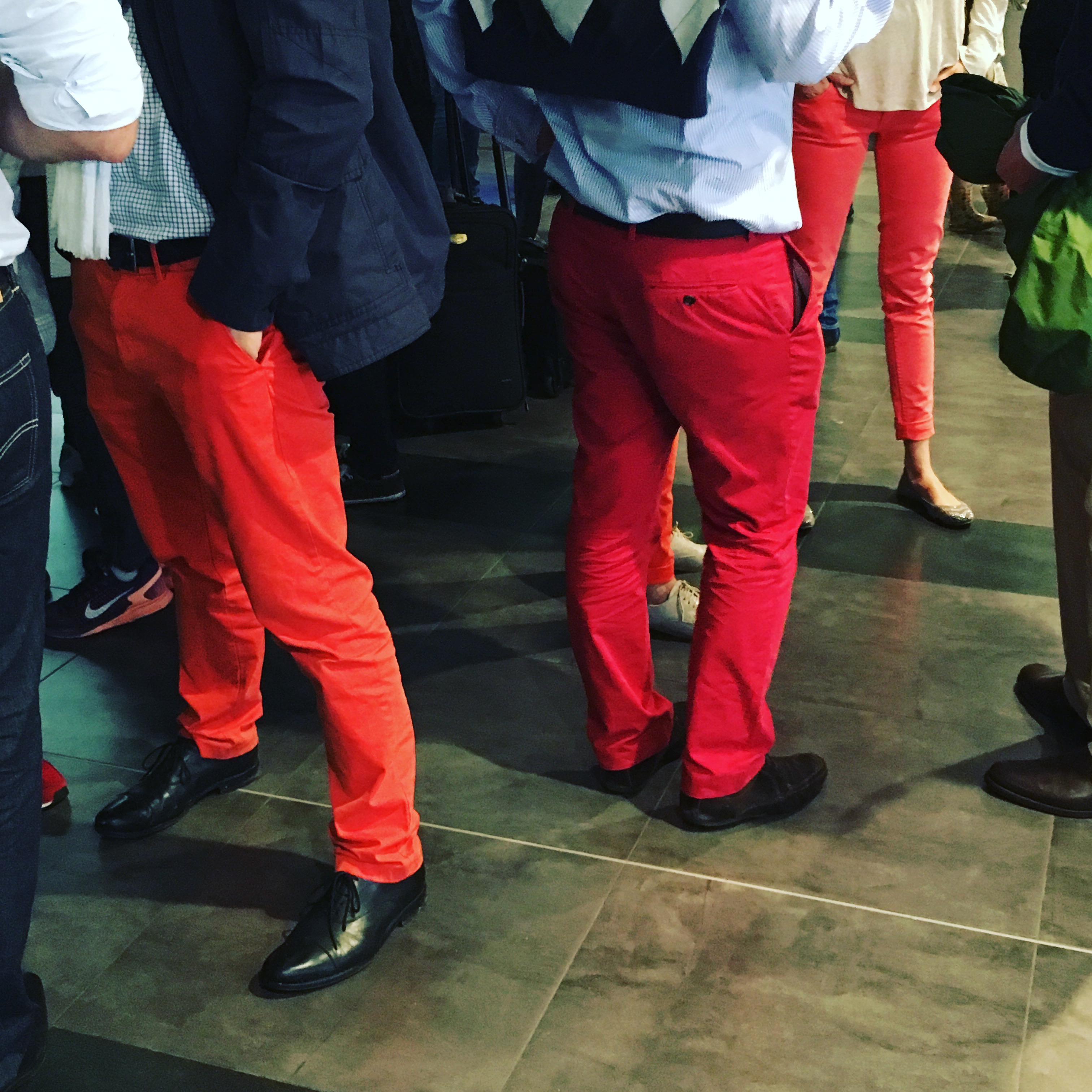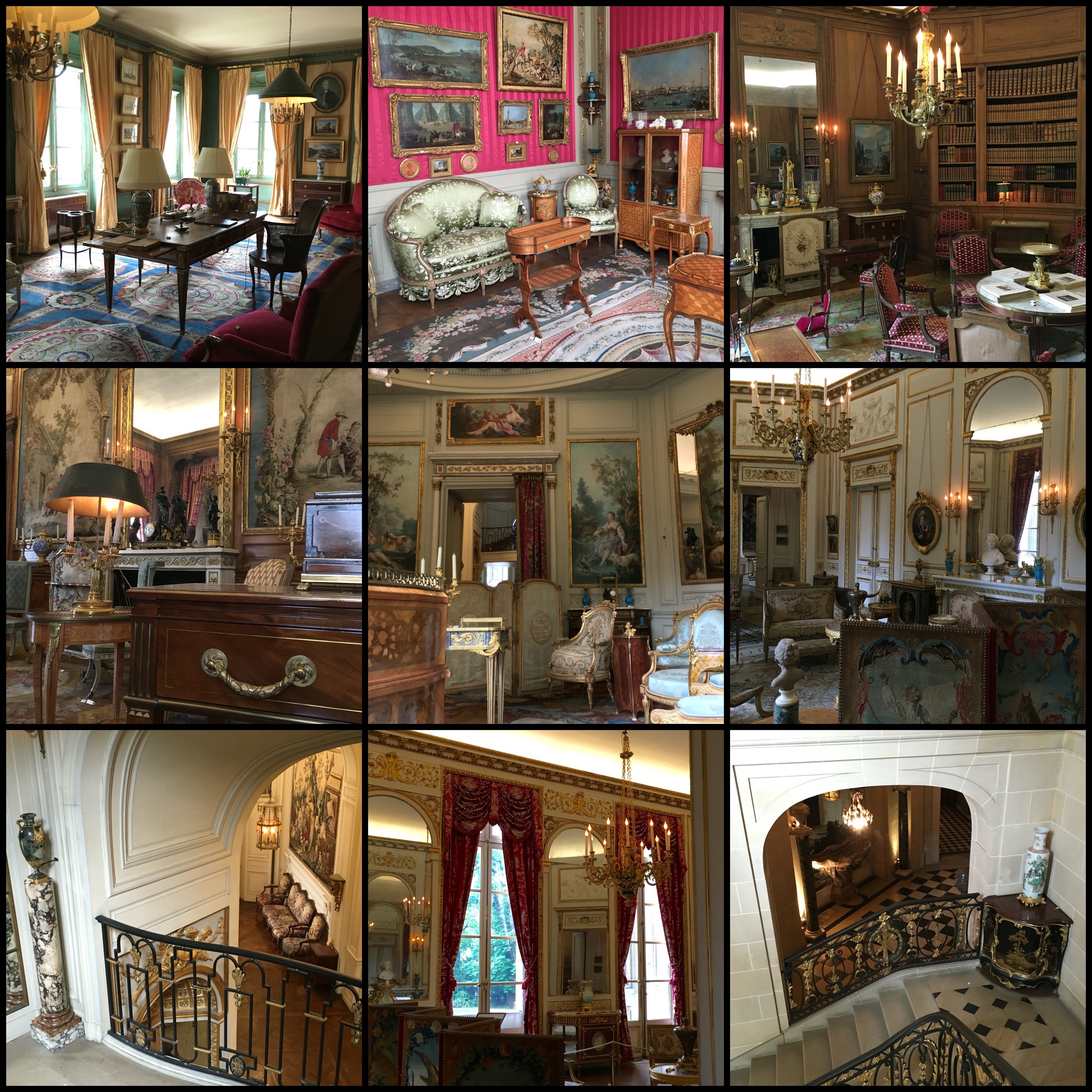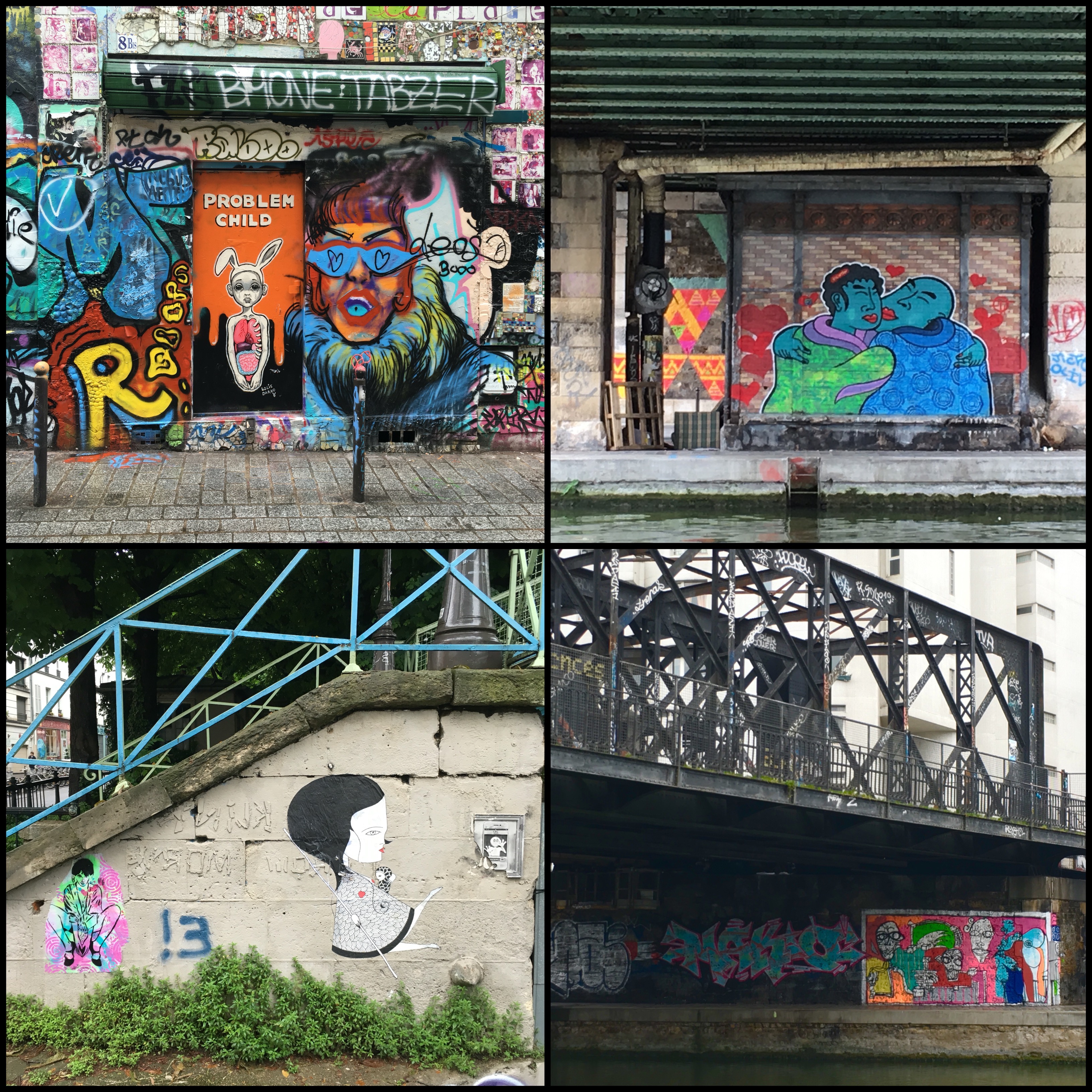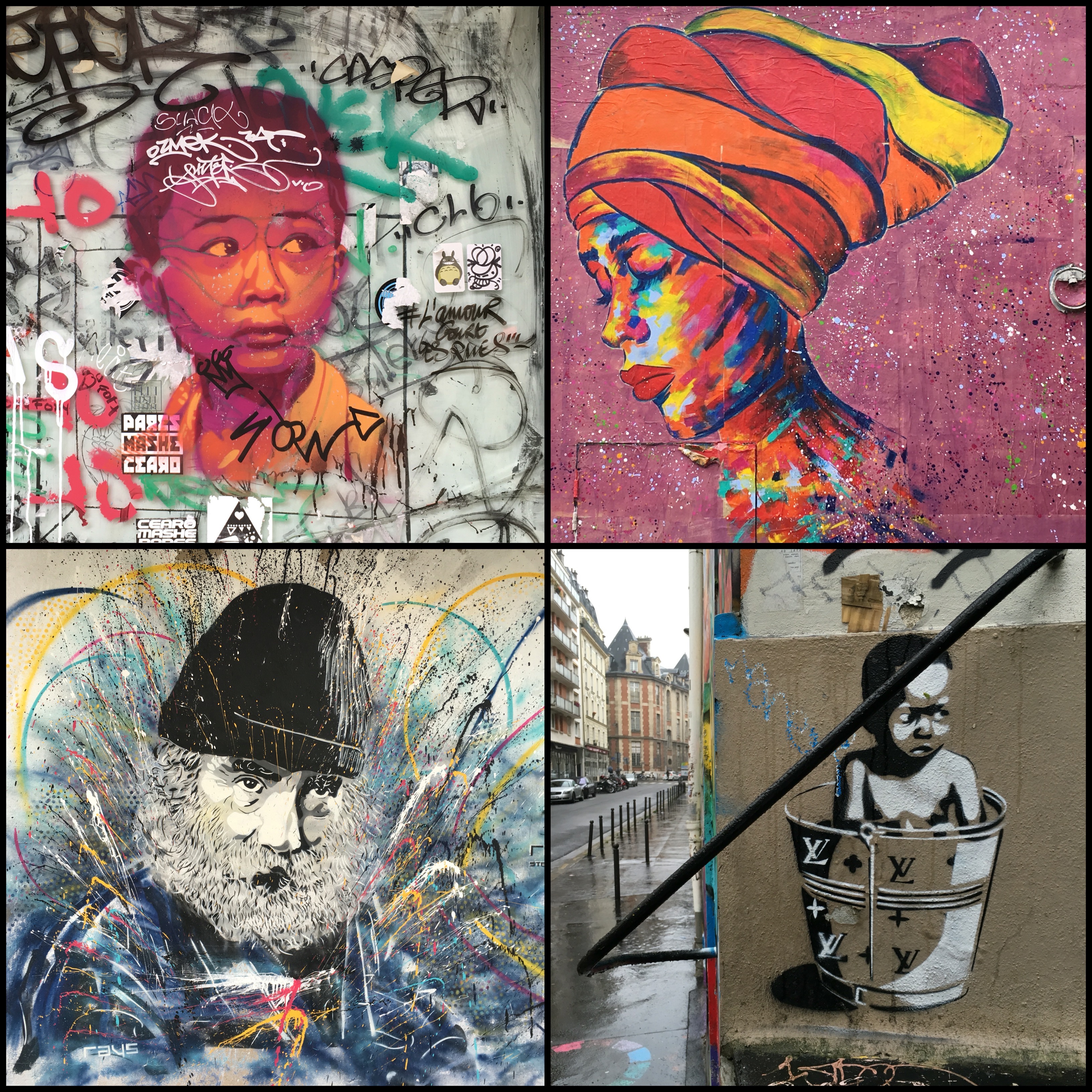Wen and I went to Paris and it rained. Not a gentle mist or a light sprinkle (we live in Seattle; we don't notice that). No: pounding sheets of rain that soaked you to the bone and swelled the Seine to levels not seen since 1982 and forced the Louvre and Musée d'Orsay to close.
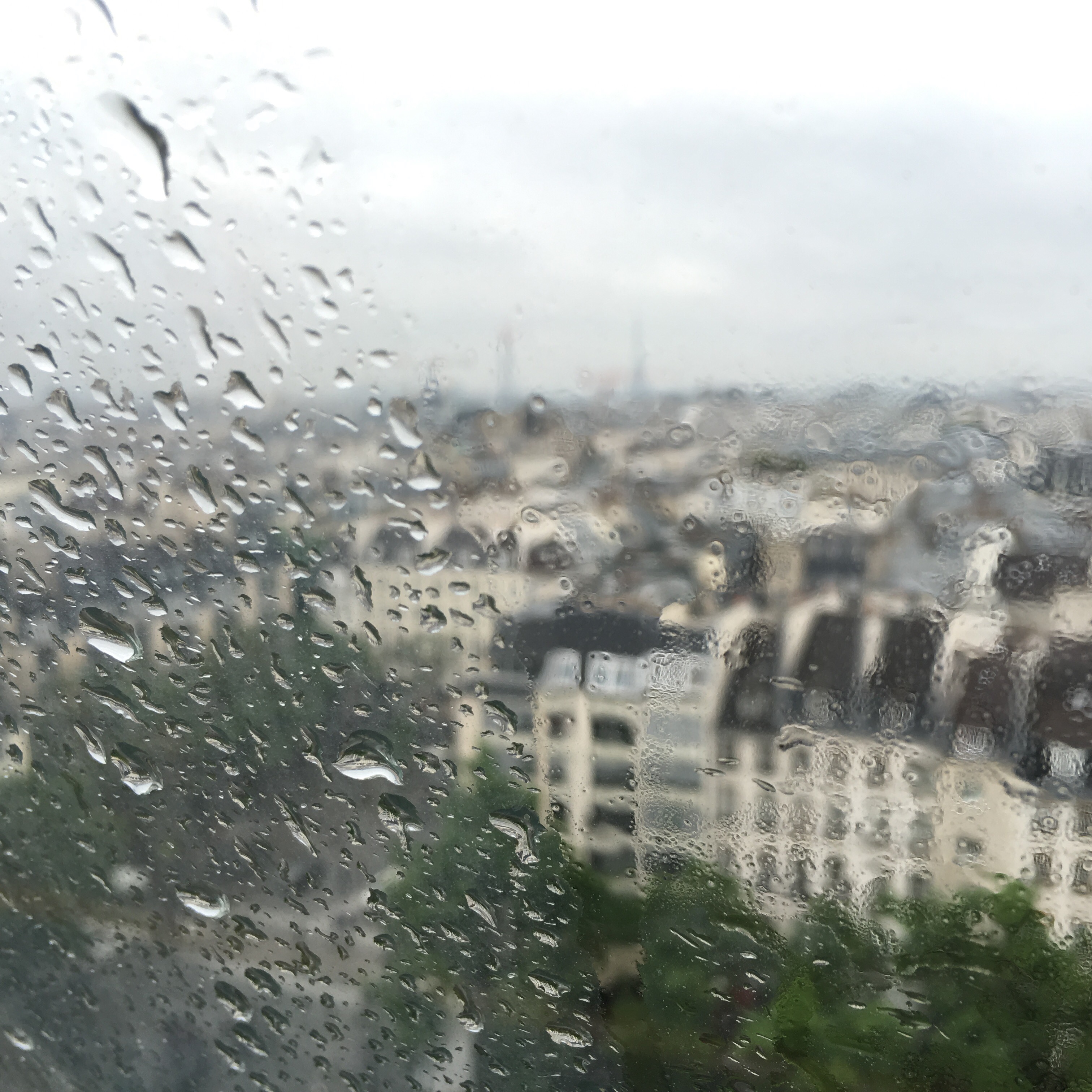
But despite that we were able to see a lot of the city and have a fantastic time. What follows are various notes and observations.
1.
One of the things that makes Paris so fascinating is that while it is an old city (dating back at least 2,000 years) but the city everyone loves was built in the blink of an eye: basically 1860 to 1920 or so. Paris is a network of stone buildings that connect a series of monumental edifices. While the monuments accumulated over the centuries, the connective tissue of five storey limestone buildings with mansard roofs largely went up over sixty years.
It's this physicality of this web - proudly not a grid - that makes the city so beguiling. The web makes buildings project onto each other at odd angles. Unlike American cities there is no straight road stretching off forever; every road appears to drive into a building.
The homogeneity of the building materials, this lack of perspective plus the nature of the light means that you lose a sense of depth. The streetscape becomes a continuous ribbon that only breaks when you walk around a corner and the edges of each building shift relative to one another, reminding you that the world is three dimensional. I could spend all day walking around and soaking in the effect.
2.
More so than many cities, Paris rewards walking. If you are willing to walk just a little further, you'll find something vastly unexpected. A 60 foot samurai warrior lit up in a courtyard. A famous architect's atelier. A flower blooming against a hotel. An elevated park where trains used to run. Covered passageways that transport you through buildings. Parks hidden inside hospitals. The bustling cafe that the locals eat at versus the plain cafe on the corner. Some of these are in guidebooks but most of it is on you: the more you explore, the more you will be rewarded.
3.
Once upon a time, young lovers would come to Paris and demonstrate their love by clipping a lock to the edge of a bridge. Thousands of couples followed suit and a few years ago, there were so many locks on the bridge that it's railings collapsed.
The authorities, smart people that they are, rebuilt the railings but covered them with plexiglass, making locks impossible to add. But young love is not so easily thwarted and now Paris has several locations that are overflowing with locks.
As you walk the Seine you now see lots of bridges and railings vying for the right to let you eternally seal your love (and don't worry if you don't have a lock-the touts will sell you one for a Euro).
This is a great example of unintended consequences and they abound in Paris. Another favorite of mine is the unintended consequence of 10 minutes of free parking at the airport.
The departure terminals force all traffic into one lane, creating awful jams. But enterprising Uber drivers know to veer off and head for the parking lot. They'll kindly drop you off at the elevator and then they rip off to get out before they hit the 10 minute cap. Sure, you've got to take the elevator up a few levels, but it beats sitting in your car for an extra 10 minutes.
4.
Speaking of traffic, Paris should be a hotbed for transport innovation - except that it's not. Fun fact: the idea for Uber came from the fact that on a crummy night in Paris at a tech conference, the future Uber founders couldn't get a taxi.
The city should be a playground for new transport ideas. The air is terrible (you have to wash your face after walking around all day), the traffic is terrible (one lane roads + delivery trucks means inevitable delays) and parking is a joke (people just bumper car their way into small spaces; alternatively, people just park in the intersection and force traffic to go around them).
But despite this, the self-driving car, the mass market electric car and Uber all come from California. The only significant transit innovation from Paris is a bike sharing scheme. While impressive, it only hints at a solution to the city's transit issues.
In fact, the city is trying an electric car sharing scheme. But one look at it tells you that it will be an uphill battle. The cars are filthy: an unwashed silver that has turned to dun; each car is literally streaked with birdshit.
It would be easy to wave this away by saying that Paris is a testament to the past. It's streets are frozen in time and so we shouldn't expect it to lead the way.
But this would be unfair to the French. They remain a creative, forward looking group. La Defense builds up to the sky and every few years a new, iconic modern building (most recently the Fondation Louis Vuitton; photo below) demonstrates the limits of design and construction technique.
I think the reason why Paris didn't invent any of the above is illustrated by the differences between the two types of people who ask you for money on the streets. The first are the sans-papiers: refugees and other folks who are busking on the corner and, one imagines, have had a tough, unfair life.
But the second group - chomeurs (people on social assistance) - are more complex. These are people who are well dressed and otherwise undistinguishable from everyone else. And they'll walk up to you and simply demand money: monsieur, donne-moi un petit piece. We watched in awkward awe as one guy went down a train and patiently asked every single person individually for some cash.
My hypothesis is that this is an outcome of the ridiculous youth unemployment that exists in France. Apparently one in three under 35s are unemployed. You don't need to continue that for too many years before you risk a lost generation.
As a tourist you only see a few signs of this crisis. The above-mentioned beggars, twenty-somethings drinking in parks and ubiquitous posters urging a national apprenticeship program:
But where did the crisis come from and what does it have to do with electric cars? We asked a few French friends and they told us that the unintended consequence (there they are again!) of rich social benefits is that no one wants to hire. See, the social contract is such that if you hire someone, you need to pay their unemployment for a while after you let them go.
So imagine that you're a small business owner and you come up with a new idea to expand. You hire someone to develop it (you pay salary plus development costs; no revenue yet). You launch. It fails. Now you've got cost (salary) but no revenue. So you have to fire the new employee or else you risk your entire business. Except that when you fire them you still have to pay their benefits. Now your entire business is at risk.
This might not sound like how it really works, but when you talk to folks, you learn that it is. A small business owner friend can't expand as fast as he'd like to because of employee costs (scarily, if you hire a bad employee and fire them for poor performance you are also still on the hook for their benefits). Another friend can only get jobs "on contract" and expects to be fired after a few renewals (because at some point the employer needs to formally hire her or they'll be violating contract law). The result is an economy that doesn't take risks and grows slower than it could (if at all). And that's why normal-looking people ask you for money on the streets of Paris and you don't see two-seater, self-driving electric cars whizzing by.
5.
Paris is a series of frames. Everywhere you go, moments are framed by doors, archways, windows, passageways and trees. Shots compose and decompose as you walk; blink and you miss them.
6.
The English language manifests itself in ambiguous ways in Paris. They're the words you're familiar with, just not in that context.
Example: you're in a McDonald's (yeah, I'm embarrassed) and the song's chorus is "I'm fucking amazing." Alternatively, you're sitting on a cafe and the hip hop on the speaker system states that "this is for all my niggers in jail." The locals are oblivious.
Related are the ridiculous English names of stores. Fashion stores called "Ice Club," "US Marshal" and "Gentlemen's Club." (Hey honey, just going to the gentlemen's club to get a, uh, suit). "Digital Smoker" vape shop. "Speed Rabbit Pizza."
7.
While I mock the use of English in Parisian storefronts, Parisian stores are actually beautiful things. Each store appears to focus on doing one thing well (you can be a butcher, a baker or a cheesemonger - but don't you dare be all three). It feels like generations have been sent figuring out how to best merchandise each store's wares so that they are maximally appealing. You could make a beautiful coffee table book of Paris' stores.
8.
If you visit Paris, be sure to spend some time people watching. The old woman walking down the street with twelve baguettes slung over her shoulder. The cheesemonger wearing a beret and sitting in his shop with a look of infinite * tristesse. The old man sipping wine before noon in the café while he pores over the paper. The two girls sitting on the terasse smoking* furiously (it's the national sport) while sipping coffees and wearing matching tan trenchcoats.
And soak in the silly things that French men do. Scooters (the emasculating push varieties, not Vespas) abound. Hoodie and scarf. Driving down the street on your motorcycle cranking "I just called to say I love you." It's these details that a culture make.
Oh, and sometimes the tourists get in on it, too. Nothing says "I'm a North Korean general's princeling" like this backpack:
Paris wasn't just built with stone; all that stone is held up by iron. Old banks and department stores have soaring iron atriums. The passageways between streets are capped in wrought iron windows. Market halls and even churches have metal ribbed vaults. A fantastic French steampunk story awaits writing.
Paris has been very unlucky in that it has been the victim of two recent terrorist attacks. This manifests itself in soldiers outside synagogues and national monuments, clear plastic garbage bags with "vigilance" printed on them and apparently arbitrarily locked doors (if you ask a local why, they just answer vigipirate - the ominously named government program to increase readiness). Train stations have posters explaining how to a survive terrorist attack . Major stores check your bags before entering and wave you down with a wand - but the latter is just theater; the wands aren't on and won't buzz on a metal belt.
A map is essential to Paris; GPS makes it even better. We travelled the city using an offline version of Google Maps as data roaming charges are usurious. For your convenience, offline Google Maps include cached versions of popular places.
But Google picks these places based on an algorithm that likely uses search frequency as a proxy for popularity. One macabre aspect of this is that the sites of the terrorist attacks are cached as "popular" places. Algorithms don't have feelings.
11.
The Parisian sartorial color palette is muted. Black, charcoal, navy, brown, grey: this is the country of existentialism, after all. No bright colors for you. And you can't look cool smoking in a neon orange shirt.
But there is one additional permissible color for men: red - but only as pants. Wendy's trip was made when she overheard two men in red pants talking about the difficulty of maintaining a yacht in St. Tropez.
12
The poor quality photo below absolutely fails to capture the wondrous example of urban life that is a Parisian square. This photo comes from Place Gustave Toudouze on a middling Friday night in early June.
Five cafes overflow with families, friends, lovers and the odd tourist all having a drink and maybe a meal. Kids run around the square, squealing with delight. A kiosk vendor sells magazines and candy to passing folks.
I suspect that the French don't even notice how vibrant it is (and this is probably a square that most would consider mediocre or mundane) but I highly recommend you camp out at a table and split a bottle of red wine with someone while watching the street life unfold.
13.
No trip to Paris would be complete without seeing how the other half lived. There are several historic mansions where an old banker/industrialist/socialite collected art over a lifetime and then donated it to the state on the condition it remain a museum. We visited the Musee Nissim de Camondo to imagine what it would be like to be a early 20th century banker obsessed with the pomp of the 18th century.
14.
The food & drink were great. Obligatory photos below. A few fun places we visited were:
- KB Cafeshop - finding good coffee in Paris is remarkably hard. This place meets the bar. Still has outdoor seating for people watching
- Du Pain et Des Idees - exquisite bakery in the 10th. They are home to the banana pain au chocolat and a slew of slightly-larger-than-bite-sized meat & cheese-filled pastries
- Gut de Brioche - these people do one thing: brioche. And they do it well. So well that they'll charge you 7 Euro for a brioche and you won't complain after you take the first bite
- Cannibale - splendid old cafe that has been turned into a fun bar. Go there in the afternoon and drink a Spritz (Aperol, prosecco & soda water - where have you been all my life?) while listening to some good music
- Yoom - most people, understandably, go to Paris for the French food. But that would ignore the (literally) world of options available to you. Moreover, when the French apply their attention to detail to other nations' cuisines, tasty things happen. This dim sum joint is a great example of that (and some of the best dim sum I've ever tasted).
15.
When you're walking Paris, be sure to look out for the street art. The entire city is a canvas. Go down alleys and look around corners to find silk screen blowups in unanticipated locations. You'll find that the same cast of characters follow you around the town.
A few good places to look: along the Canal Saint-Martin/Bassin de la Villette (hint: this is also a good running spot, so go for a run and bring your camera) and Rue Denoyez in Belleville.
16.
That's it. Let me leave you with some additional photos. Can't wait to go back one day.
